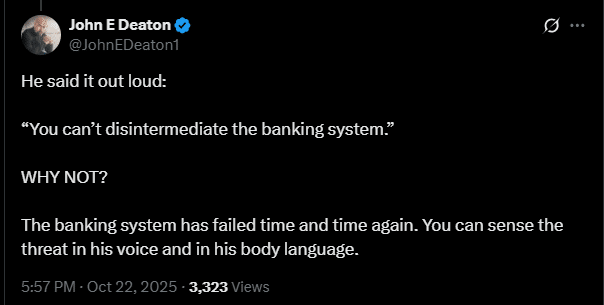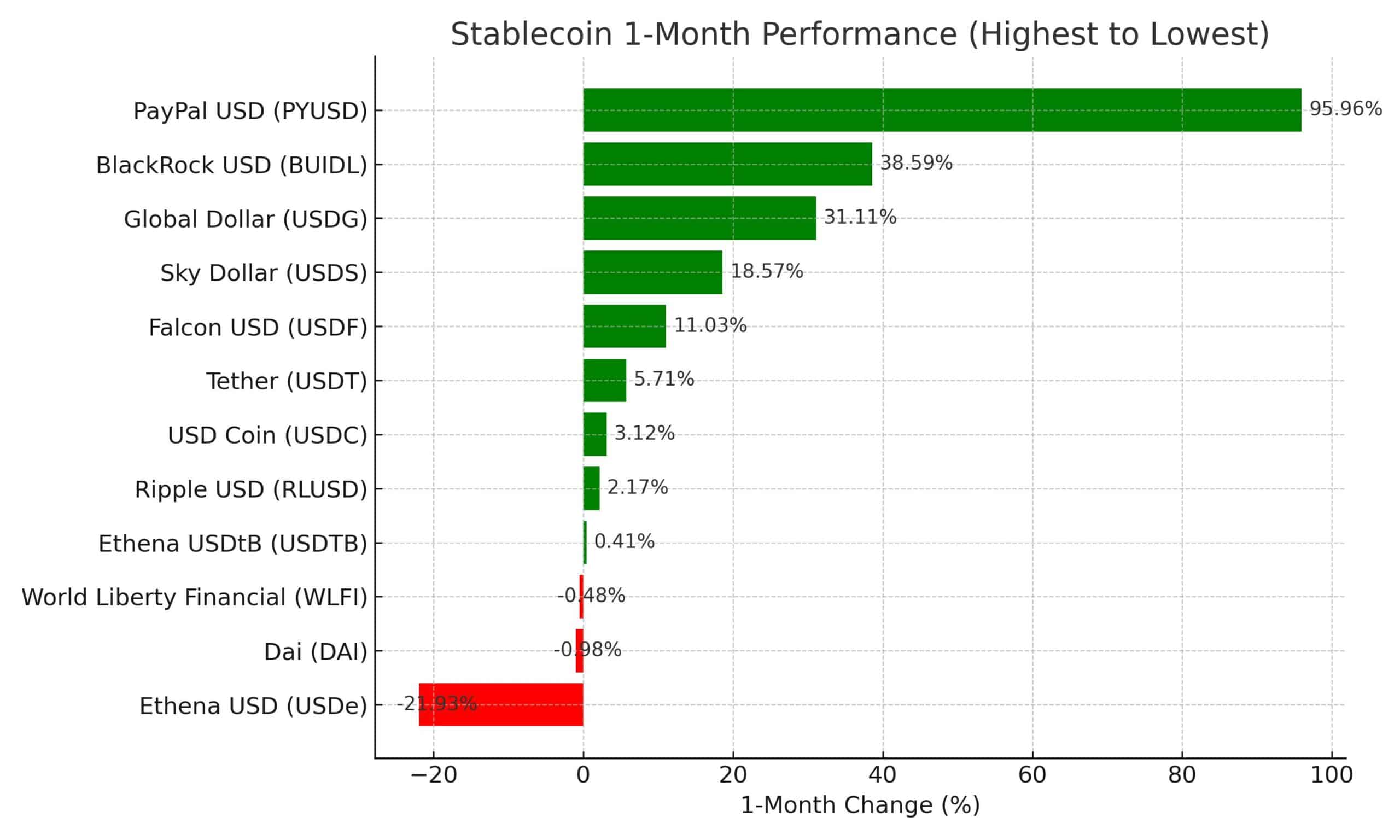Fed Governor Christopher Waller has expressed concerns over stablecoin rewards, viewing payment stablecoins as non-interest-bearing currency similar to cash, not bank deposits. He argues against issuers using exchanges as a backdoor for yields, emphasizing that such features could undermine the banking system without congressional approval.
-
Fed’s proposed access to payment rails for stablecoin issuers marks a significant policy shift, welcomed by the industry for enhancing efficiency.
-
Waller’s comments highlight tensions between crypto innovation and traditional banking, with stablecoins growing to $308 billion amid yield-bearing trends.
-
Criticism from crypto leaders, including figures like John Deaton, accuses the stance of favoring banks and stifling financial inclusion, backed by data from DeFiLlama showing rapid market expansion.
Discover Fed Governor Waller’s stance on stablecoin rewards and its impact on crypto vs. banks. Explore policy shifts and market growth in this in-depth analysis. Stay informed on stablecoin regulations today.
What is Fed Governor Waller’s stance on stablecoin rewards?
Stablecoin rewards have drawn scrutiny from Federal Reserve Governor Christopher Waller, who classifies payment stablecoins as a form of currency that should not generate interest like traditional bank accounts. In a recent interview with crypto reporter Eleanor Terrett, Waller criticized stablecoin issuers for leveraging exchanges to provide yields, calling it a “backdoor” approach that circumvents regulatory intent. He stressed that stablecoins are structurally limited and cannot replace the banking system’s role in intermediation, noting these views are personal and subject to congressional decision-making.
How has the crypto industry responded to Waller’s views on stablecoin interest?
The crypto sector has reacted sharply to Waller’s comments, viewing them as outdated and biased toward protecting the banking industry. Leaders argue that prohibiting stablecoin rewards hampers innovation and limits financial inclusion for users seeking efficient digital payment options. For instance, pro-crypto senatorial candidate John Deaton remarked on the perceived threat in Waller’s tone, highlighting repeated failures of the traditional banking system and the need for evolution. Scott Johnsson, a finance lawyer and crypto advocate, dismissed the arguments as “meaningless,” pointing to the global competition in stablecoins where the U.S. risks falling behind without progressive policies.
Supporting data from DeFiLlama indicates the stablecoin market has expanded to $308 billion, with much of the recent growth driven by yield-bearing assets like PayPal USD (PYUSD). This surge underscores the demand for features that provide returns, challenging Waller’s position that stablecoins should function solely as non-yielding currency. Industry groups, such as the Blockchain Association, have lobbied against amendments to the GENIUS Act that would restrict these rewards, emphasizing their role in fostering adoption.


Source: X
Earlier in the week, a positive development emerged when Waller indicated the Federal Reserve’s openness to granting stablecoin issuers limited access to its payment rails. This proposal represents a notable evolution in regulatory thinking, potentially streamlining transactions and integrating digital assets more seamlessly into the financial ecosystem. Crypto executives hailed the move as a step toward greater legitimacy and efficiency, contrasting with the subsequent debate over rewards.
Waller’s interview remarks built on this by reinforcing boundaries: stablecoins, in his view, are tools for payments, not investments. He noted, “You’re not holding a currency for its yield. If Congress wanted you to pay interest, they’d just let you pay interest. Trying to backdoor it is a little funny.” This perspective aligns with broader concerns about maintaining monetary policy control and preventing capital shifts from insured bank deposits.
Frequently Asked Questions
What impact could the GENIUS Act have on stablecoin rewards?
The GENIUS Act, signed into law in July 2025, establishes frameworks for stablecoin issuance but has sparked debate over interest provisions. Banking groups seek amendments to close perceived loopholes allowing rewards, arguing it competes with traditional savings. Crypto advocates defend it as essential for user benefits, with the stablecoin market’s $308 billion valuation demonstrating strong demand for such features.
Why are stablecoin rewards controversial in the context of Federal Reserve policy?
Stablecoin rewards are controversial because they blur lines between currency and deposit-like products, potentially disrupting the Federal Reserve’s interest rate transmission. Governor Waller and banking associations worry about capital flight from banks, reducing lending capacity. However, proponents highlight how yields enhance accessibility, especially in underserved regions, promoting dollar dominance in global digital finance through natural, conversational incentives.
Key Takeaways
- Fed’s Payment Rail Access: Waller’s proposal for stablecoin issuers to use Fed rails signals regulatory progress, boosting efficiency without full banking integration.
- Criticism of Yield Strategies: Waller’s rejection of backdoor interest via exchanges underscores views of stablecoins as pure currency, drawing industry backlash for limiting innovation.
- Market Growth and Policy Clash: With stablecoins at $308 billion, driven by yield assets, ongoing legislative battles like the stalled CLARITY Act could shape future competition between crypto and banks.


Source: COINOTAG/DeFiLlama
Conclusion
The debate surrounding stablecoin rewards and Fed Governor Waller’s stance reveals deepening divides between the crypto industry and traditional banking, fueled by legislative efforts like the GENIUS Act. As the stablecoin market continues its ascent to $308 billion, with yield-bearing options at the forefront, collaboration emerges as key to balancing innovation and stability. Former World Bank President David Malpass emphasized this, stating, “The U.S. has an opportunity to lead on stablecoins through innovation-friendly crypto policies and policies that defend the dollar’s purchasing power. There’s a global competition for market share in stablecoins.” Stakeholders should monitor upcoming bills like the CLARITY Act, positioning themselves for a more integrated financial future.
